I am trying to build a sankey network. This is my data and code:
library(networkD3)
nodes <- data.frame(c("A", "B", "C", "D", "E", "F", "G", "H", "I", "J", "K", "D", "E", "N", "O", "P", "Q", "R"))
names(nodes) <- "name"
nodes$name = as.character(nodes$name)
links <- data.frame(matrix(
c(0, 2, 318.167,
0, 3, 73.85,
0, 4, 51.1262,
0, 5, 6.83333,
0, 6, 5.68571,
0, 7, 27.4167,
0, 8, 4.16667,
0, 9, 27.7381,
1, 10, 627.015,
1, 3, 884.428,
1, 4, 364.211,
1, 13, 12.33333,
1, 14, 9,
1, 15, 37.2833,
1, 16, 9.6,
1, 17, 30.5485), nrow=16, ncol=3, byrow = TRUE))
colnames(links) <- c("source", "target", "value")
links$source = as.integer(links$source)
links$target = as.integer(links$target)
links$value = as.numeric(links$value)
sankeyNetwork(Links = links, Nodes = nodes, Source = "source",
Target = "target", Value = "value", NodeID = "name",
fontSize = 12, fontFamily = 'Arial', nodeWidth = 20)
The problem is that A and B only have common links to D and E. Although the links are correctly displayed, D and E are also shown at the right-bottom. How can I avoid this ? Note: If I specify
nodes <- data.frame(c("A", "B", "C", "D", "E", "F", "G", "H", "I", "J", "K", "N", "O", "P", "Q", "R"))
no network at all is created.

